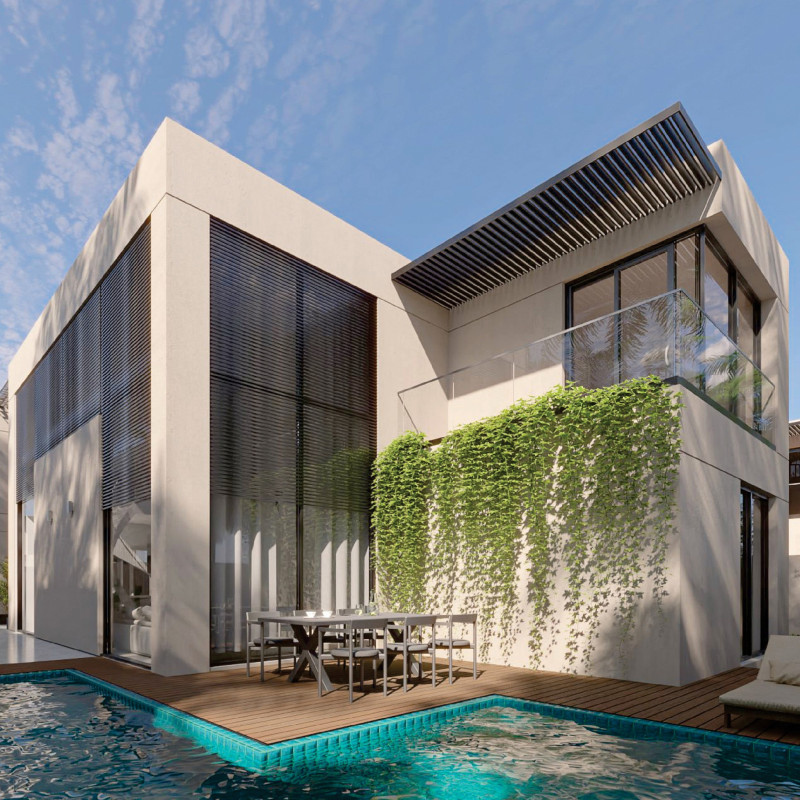5 key facts about this project
At its core, the project serves as a [mention specific function, such as residential, commercial, or mixed-use development]. The layout is crafted to accommodate the needs of its occupants, ensuring that spaces are both versatile and comfortable. Natural light floods the interiors, facilitated by large windows that create a visual connection with the outdoors. This design choice not only enhances the well-being of users but also reduces reliance on artificial lighting, furthering the project's commitment to sustainability.
One of the distinctive elements of this design is its use of materials. A selection of [list key materials used, such as wood, steel, concrete, or glass] has been employed to create an inviting atmosphere. The choice of these materials reflects a respect for local traditions and environmental considerations. For instance, the use of wood brings warmth to the spaces, while concrete provides robustness and longevity. Each material is utilized in a way that highlights its inherent qualities, creating textures and visual interest throughout the architecture.
The project’s architectural language is characterized by [describe any notable architectural features, such as minimalist forms, asymmetry, or contextual responsiveness]. These design approaches contribute to a sense of harmony with the surrounding environment. The rooflines, for example, may mimic the natural topography, reinforcing the connection between the built and natural environments. Landscaping is equally vital, as green spaces are woven into the fabric of the project, offering areas for recreation and relaxation. This not only enhances the aesthetic appeal but also promotes biodiversity and ecological health.
Attention to detail is evident in various aspects of the design. The interior spaces are carefully laid out to promote ease of movement and interaction. Thoughtful consideration has been given to the positioning of communal areas, which encourage socialization among occupants. In contrast, private zones are designed to provide solitude and tranquility. This duality ensures that the needs of both community and individual are met, striking a balance that is often challenging in modern design.
Sustainability is woven into the fabric of the architecture, with features such as [mention any specific sustainable practices or technologies]. Elements like energy-efficient systems, rainwater harvesting, and the incorporation of renewable energy sources contribute to reducing the project's carbon footprint. These design strategies not only fulfill an ethical obligation towards the environment but also resonate with an increasingly eco-conscious public.
What sets this project apart is its ability to adapt to the cultural and environmental context of its location. The architecture reflects a deep understanding of local climate conditions, social dynamics, and cultural heritage. By engaging with these factors, the design creates a place that feels both timeless and relevant.
For those interested in exploring this project further, detailed architectural plans, sections, and designs are available to provide deeper insights into the innovative ideas employed. A thorough review of these elements will reveal the complexity and thoughtfulness embedded in every facet of the design, showcasing how architecture can not only serve functional purposes but also enhance the quality of life for its users.


 Ahmad Khosravi
Ahmad Khosravi 























